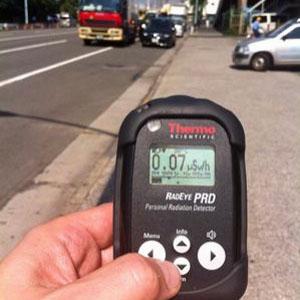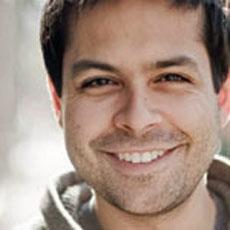
If you were to picture the sort of person who might take the lead in gathering radiation data from the Fukushima nuclear accident, Marcelino Alvarez probably wouldn't come to mind.
"My background is actually not in physics or nuclear physics or science or radiation data," he says. "It's actually in advertising, so, building websites and doing product development."
But Alvarez also follows what's happening in the world. During the early days of the Fukushima crisis, he watched the news coverage nonstop. And he was surprised that even the experts were having a hard time finding accurate up-to-date information.
"So I said, 'There's got to be a better way.' And I drew a really crude sketch and I sent it to our creative director, and I said, 'What do you think about this? What if we made a site that just invited people to contribute their own data?' And so we designed it and, two days after that, basically launched the first version of the site."
That website became what's now called Safecast. The home page has a constantly-updating map of Japan with little pins charting the latest radiation data. Safecast aggregates data from official public sources and lets volunteers to upload their own Geiger counter readings.

Alvarez drew on his background in web design and location-based mobile apps to pull it together. He's also working with scientists in the United States and Japan and individual programmers in Tokyo.
"So we've got official Japanese ministry data. We have volunteers in Japan data. We have Greenpeace and other organizations that are driving around creating data." says Alvarez. "So it's a mix, and we hope that mix will help create a more accurate picture of what's actually going on."
Many people in Japan are hungry for that picture, given what Pieter Franken says are the frustrations with official government data. The Dutch Internet researcher at Tokyo's Keio University is a member of Safecast's Japanese team.
"What we have been seeing is that information that has been given has either been given too late, weeks after the measurements were done," says Franken, "or may not have been done in a consistent manner."
Safecast's instant uploads mean its data is always timely. It's also established standards for consistency for its volunteers. For instance, they're asked to note where they took their measurements. Since fallout settles on the ground, a reading from a roof can be different from a reading at ground level.
Franken says knowing this is especially important when you're trying to determine a possible risk to children.
"Kids love to touch soil, play with it, small babies stick it in their mouth and stuff like that. So when we're measuring, it makes sense to measure at a height of one meter, actually a little bit lower than that, to understand what a child is exposed to in daily life."
But even with established standards, relying on citizen-scientists means there are always questions about accuracy of the data.
Safecast Marcelino Alvarez acknowledges the potential problems: "So we make it very clear on the site that yes, there could most definitely be inaccuracies in crowd-sourced data." says Alvarez. "And yes, there could be contamination of a particular Geiger counter so the readings could be off. But our hope is that with more centers and more data being reported that those points that are outliers can be eliminated, and that trends can be discerned from the data that's being reported."
American scientist Stephen Frantz sees value in this open-source model. He runs the small research reactor at Portland's Reed College.
"If we get enough databases, enough information, we might see trends that nobody had ever measured because we didn't see them before." he says. "And we say, 'Oh, look at that, the radiation levels here are doing this.'"
Frantz also says having so much data in such a user-friendly format can serve another purpose: help people understand that not all radiation is due to leaks from nuclear power plants, that background radiation is a natural part of life.
"We live in a sea of radiation." says Frantz. "We've evolved in it and, since we can't sense it with our five senses, we didn't even know about it until 100 years ago. But we've been living in it all of time."
But of course, accidents and other unusual events do happen. And the situation at the Fukushima reactor site is still volatile. That's why Marcelino Alvarez is continuing to adjust the website in response to suggestions from citizens and scientists. And Safecast recently completed a fundraising campaign to send 600 Geiger counters to volunteers in Japan.
Alvarez hopes the non-profit Safecast model can grow, eventually creating a resource for collecting and sharing all kinds of environmental data, from pollen counts and seismic activity to pollution levels.
Geiger counter: a device used for finding and measuring radioactivity 蓋革計數(shù)器(用以探測和測量放射)
Nuke plant cooling system halted after 90-minute test
Fukushima farmers worry about region's brand
(來源:VOA 編輯:崔旭燕)
